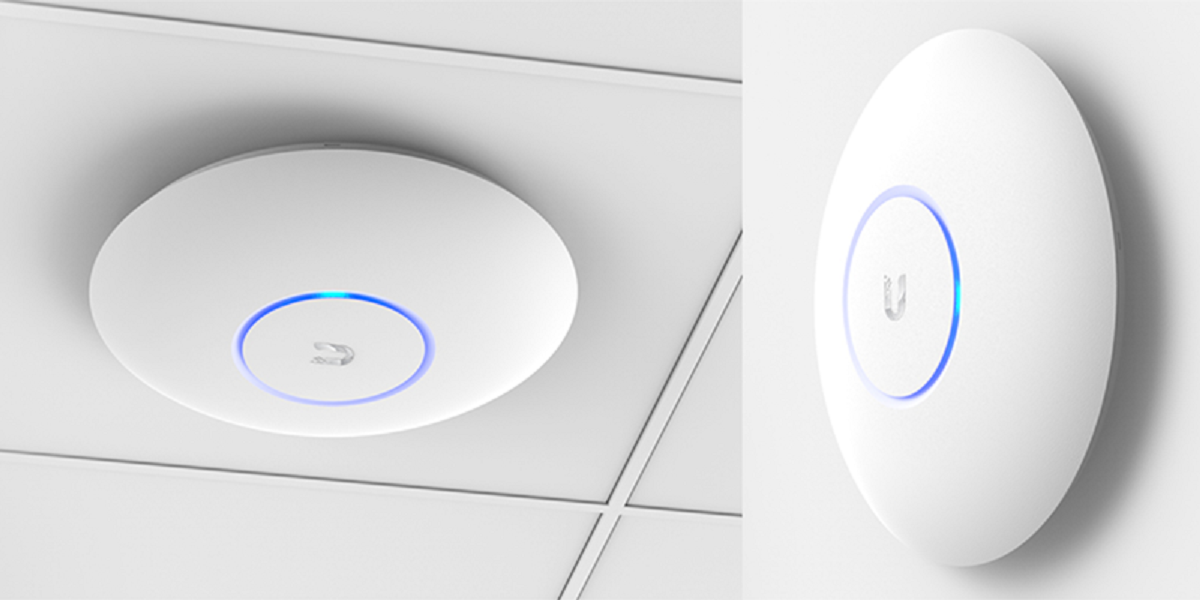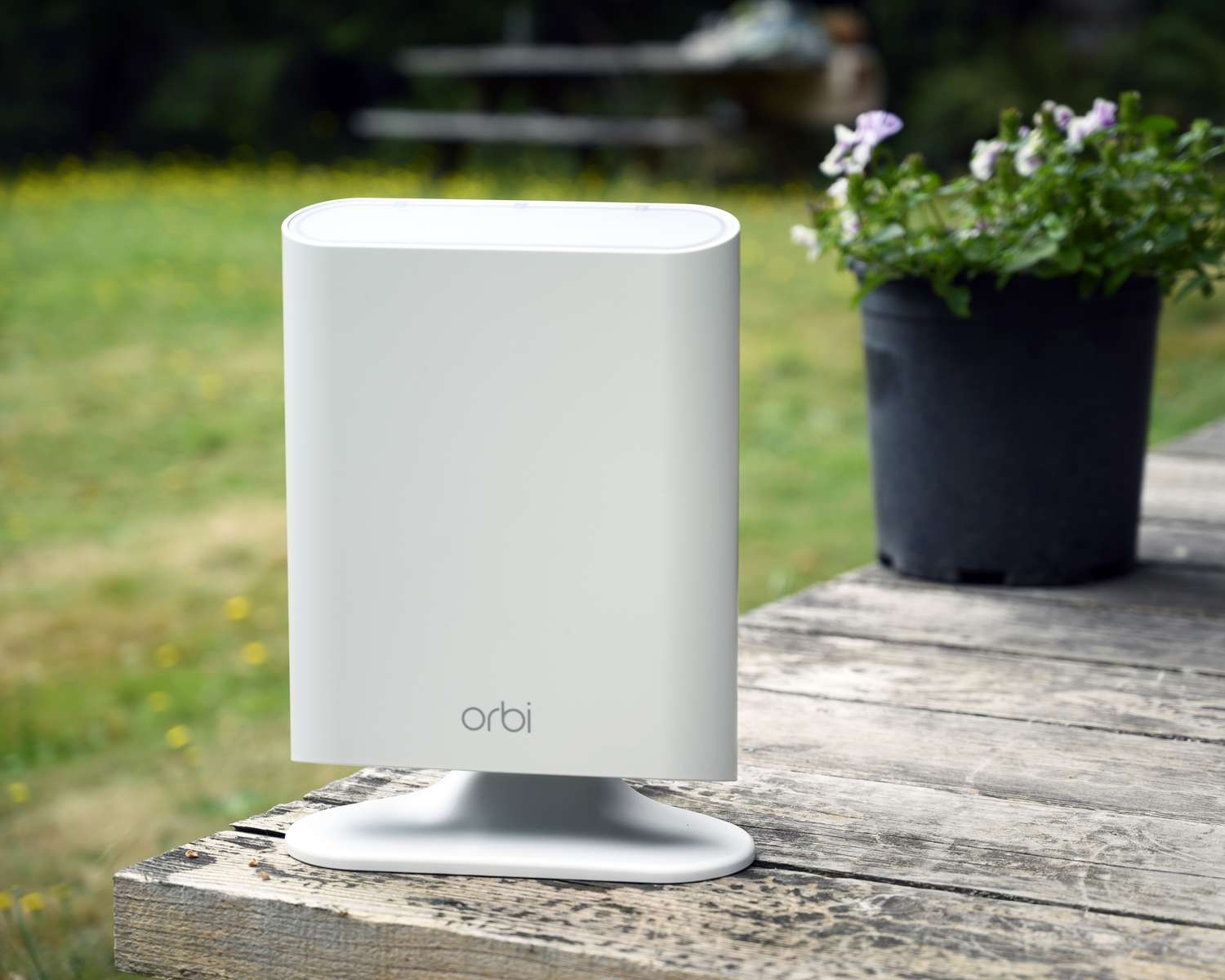Introduction
Wireless technology has revolutionized the way we connect to the internet. From smartphones to laptops, almost every device now comes equipped with WiFi capabilities. However, to establish a WiFi network that covers a larger area or multiple floors, a single router may not be sufficient. This is where access points come into play.
An access point is a device that extends the range and coverage of a WiFi network. It acts as a central hub, allowing multiple devices to connect to the network wirelessly. Whether you are at home, in the office, or in a public space, access points provide a seamless and reliable connection, ensuring that you can browse the web, stream videos, and communicate online without interruptions.
In this article, we will explore what an access point is, how it works, and the benefits of using one. We will also delve into the different types of access points available and guide you on selecting the right one for your specific needs. Additionally, we will provide insights on setting up an access point and troubleshooting common issues that may arise.
So, if you are looking for a way to enhance your WiFi network and improve connectivity, keep reading to discover the wonders of access points and how they can revolutionize your wireless experience.
What Is an Access Point for WiFi?
An access point (AP) is a networking device that enables wireless devices to connect to a wired network using WiFi. It serves as a bridge between the wired local area network (LAN) and wireless devices, creating a wireless access point for convenient internet access. The access point extends the range and coverage of the network, providing a reliable connection throughout an area or building.
Think of the access point as a translator between your wired network and wireless devices. It receives internet data from the wired network, converts it into a wireless signal, and transmits it over the airwaves, allowing WiFi-enabled devices to access the internet without the need for physical connections.
One key feature of an access point is its ability to support multiple connections simultaneously. It can handle numerous devices, such as smartphones, tablets, laptops, and smart home devices, connecting and using the network simultaneously without significant loss in performance. This makes access points an excellent choice for homes or businesses where multiple users are likely to be accessing the network simultaneously.
Moreover, access points can offer additional security measures to protect your network. They can support various encryption protocols like WPA2, ensuring that your wireless communications remain secure and encrypted, safeguarding sensitive data from potential threats or unauthorized access.
Access points can be used in various scenarios. In homes, they can be installed to extend WiFi coverage to areas with weak signals or dead spots, ensuring good connectivity throughout the entire house. In larger buildings or offices, multiple access points can be strategically placed to provide seamless coverage, allowing employees to move around freely without losing connection.
Now that you have a better understanding of what an access point for WiFi is, let us explore further how it actually works to improve your wireless network and the benefits it offers.
How Does an Access Point Work?
To understand how an access point works, let’s break it down into three main components: the access point itself, the wired network, and the wireless devices.
Firstly, the access point connects to the wired network, usually through an Ethernet cable. This connection allows the access point to receive and transmit data to and from the wired network. The access point acts as a central hub, providing a bridge between the wired network and the wireless devices.
Once connected to the wired network, the access point generates a WiFi signal that is broadcasted over the airwaves. The signal is used by wireless devices to establish a connection to the network. Think of the access point as a radio station transmitting a signal, and the devices as the radios tuning in to that signal.
When a wireless device such as a smartphone or laptop wants to connect to the network, it scans the surrounding area for available WiFi networks. Once it detects the signal from the access point, it sends a connection request.
The access point receives the request and authenticates the device’s credentials, ensuring it is authorized to access the network. If the credentials check out, a secure connection is established between the device and the access point.
Now, the wireless device can send and receive data through the access point, just like it would with a wired connection. The access point relays the data between the wireless device and the wired network, allowing seamless communication between the two.
An access point can handle multiple connections simultaneously, allowing multiple devices to access the network. It can efficiently manage the flow of data between devices, ensuring a smooth and uninterrupted wireless experience.
It is important to note that access points work within a specific range. The range depends on various factors including the device’s power output, the building’s structure, and any interference from other devices or obstacles in the environment. To extend the range of the network, additional access points can be installed and strategically placed to ensure optimal coverage.
Now that we have covered how an access point works, let’s explore the benefits of using one for your WiFi network.
Benefits of Using an Access Point
Using an access point for your WiFi network offers several advantages that enhance your wireless experience. Let’s explore the key benefits of incorporating an access point into your network setup.
1. Extended Coverage
Access points extend the range of your WiFi network, ensuring that you have reliable coverage throughout your home, office, or any other space. By strategically placing access points, you can eliminate dead spots and ensure a strong signal in every room, enabling seamless connectivity for all your devices.
2. Increased Capacity
Access points can handle multiple connections simultaneously, allowing numerous devices to connect to the network without sacrificing performance. Whether it’s your family’s devices at home or multiple employees in an office environment, access points efficiently manage the traffic and ensure smooth communication for all connected devices.
3. Improved Performance
With an access point, you can enjoy faster WiFi speeds compared to relying on a single router for your entire network. Access points distribute the workload, reducing network congestion and providing better performance, especially in high-demand environments where multiple devices are accessing the network simultaneously.
4. Enhanced Security
Access points offer robust security features to protect your network from unauthorized access or potential threats. They support encryption protocols like WPA2, ensuring that your wireless communications remain secure and encrypted. This provides peace of mind, knowing that your sensitive data is protected and only accessible to authorized users.
5. Flexible Network Expansion
Access points allow for easy network expansion and scalability. As your network needs grow, you can simply add more access points to accommodate the increasing number of connected devices. This flexibility makes access points an ideal solution for both small-scale and large-scale network deployments.
6. Seamless Roaming
Access points facilitate seamless roaming within your WiFi network. As you move from one area to another, your device can automatically connect to the access point with the strongest signal, ensuring uninterrupted connectivity without the need to manually switch networks. This is particularly beneficial in larger spaces or buildings where you need continuous access to the network while moving around.
By leveraging the benefits of an access point, you can elevate the performance, coverage, and security of your WiFi network, providing a reliable and seamless wireless experience for all users. Next, let’s explore the different types of access points available to cater to diverse network requirements.
Types of Access Points
Access points come in various types, each designed to cater to specific network requirements and environments. Let’s take a look at the different types of access points available in the market.
1. Single-Band Access Points
Single-band access points operate on a single frequency band, usually 2.4 GHz. They are affordable and suitable for small networks or environments with minimal interference. However, they may suffer from congestion in densely populated areas due to the limited number of available channels.
2. Dual-Band Access Points
Dual-band access points operate on both the 2.4 GHz and 5 GHz frequency bands. They provide better performance and flexibility by offering more channels and less interference. Dual-band access points are ideal for networks with high-density user environments, such as offices, cafes, or public spaces.
3. Outdoor Access Points
Outdoor access points are designed to withstand harsh weather conditions and provide WiFi coverage in outdoor spaces. They often have a rugged construction, and their antennas are optimized for long-range coverage. Outdoor access points are commonly used in parks, campuses, stadiums, and other open areas where WiFi connectivity is required outdoors.
4. Cloud-Managed Access Points
Cloud-managed access points are remotely managed through a cloud-based controller. This allows network administrators to easily monitor and configure multiple access points from a centralized location. Cloud-managed access points offer convenience, scalability, and enhanced control over network management and security settings.
5. Mesh Access Points
Mesh access points work together to create a self-healing network architecture. They form a mesh network by wirelessly connecting to each other, extending WiFi coverage over a wide area. Mesh access points are beneficial in large homes, multi-story buildings, or outdoor environments, eliminating dead zones and providing seamless coverage throughout the entire network.
6. Enterprise-Grade Access Points
Enterprise-grade access points are designed for large-scale deployments in complex network environments. They offer advanced features such as support for multiple SSIDs, VLANs, and seamless roaming. These access points are commonly used in businesses, educational institutions, and other organizations that require robust and high-performance WiFi networks.
Choosing the right type of access point depends on factors such as the size of the area to be covered, the number of users, outdoor or indoor deployment, and specific networking requirements. Consider your needs and consult with a network professional to determine the most suitable access point for your WiFi network. Now let’s move on to the next section and learn how to choose the right access point for your needs.
Choosing the Right Access Point for Your Needs
Now that you are familiar with the different types of access points available, it’s essential to understand how to choose the right one for your specific needs. Here are some factors to consider when selecting an access point for your WiFi network.
1. Coverage Area
Consider the size of the area that needs WiFi coverage. Determine whether you need coverage in a small home, office, or a larger space like a warehouse or campus. This will help you determine the number of access points required and the range each access point should cover.
2. Capacity and Performance
Evaluate the number of devices that will be connected to the network simultaneously and the expected bandwidth requirements. For high-density environments like offices or public spaces, choose access points with higher capacity and better performance to ensure smooth connectivity for all users.
3. Frequency Band
Consider whether you need a single-band or dual-band access point. Dual-band access points offer greater flexibility and reduced interference, especially in areas with multiple wireless networks. Additionally, the 5 GHz band provides faster speeds and is ideal for multimedia streaming or gaming.
4. Outdoor vs. Indoor Use
Determine whether you require an access point for outdoor or indoor deployment. Outdoor access points are designed to withstand environmental elements, while indoor access points are optimized for coverage within buildings. Choose the appropriate type based on your specific needs.
5. Management and Control
Consider the management and control options that best suit your requirements. Cloud-managed access points offer centralized management, remote monitoring, and easy configuration. On the other hand, standalone access points provide more control at the local level.
6. Budget
Set a budget for your access point investment. Compare the features, performance, and pricing of different access points to find the best balance between cost and functionality. Remember that investing in higher quality access points can provide better long-term performance and reliability.
Taking these factors into account will help you choose the right access point that meets your specific needs and requirements. Remember to consult with network professionals or experts in the field to ensure you make an informed decision. In the next section, we will discuss the process of setting up an access point.
Setting Up an Access Point
Setting up an access point requires a few straightforward steps to ensure proper configuration and seamless integration into your network. Follow these steps to set up your access point successfully:
1. Determine Placement
Choose a suitable location for your access point that provides optimal coverage. Consider factors such as the area to be covered, potential obstructions, and the need for signal penetration through walls or floors. Ensure that the access point is centrally positioned for even distribution of WiFi signal.
2. Connect to Power
Plug the access point into a power outlet using the supplied adapter or cable. Ensure a stable power source to prevent any interruptions or fluctuations in the network connection.
3. Connect to the Network
Connect the access point to your wired network using an Ethernet cable. If you’re setting up a standalone access point, connect the cable to the LAN port on the access point. For cloud-managed access points, follow the manufacturer’s instructions for connecting to the network.
4. Configure Access Point Settings
Access the administration settings of your access point. This is typically done by entering the IP address of the access point into a web browser. Consult the manufacturer’s documentation for the default IP address and login credentials. Once logged in, configure basic network settings such as SSID (network name) and security settings (password, encryption).
5. Fine-Tune Advanced Settings (Optional)
If desired, you can further fine-tune advanced settings of the access point, such as VLANs, QoS (Quality of Service), or guest networks. These settings are typically accessed through the administration interface of the access point and may require some technical knowledge or assistance.
6. Test and Troubleshoot
After configuring the access point, test the WiFi signal in different areas to ensure coverage and connectivity. Check for any potential interference or areas with weak signal strength. If you encounter any issues, consult the documentation or contact technical support for troubleshooting assistance.
By following these steps and ensuring proper configuration, you can successfully set up an access point that enhances your WiFi network’s coverage and performance. Remember to refer to the manufacturer’s guidelines and documentation specific to your access point model for detailed setup instructions and troubleshooting tips. In the next section, we will address common issues that may arise while using access points and how to troubleshoot them.
Troubleshooting Common Issues with Access Points
While access points are designed to provide seamless WiFi connectivity, certain issues may arise from time to time. Here are some common problems that users may encounter when using access points and possible troubleshooting steps to resolve them.
1. Weak or Inconsistent WiFi Signal
If you experience a weak or inconsistent WiFi signal, ensure that the access point is placed in a central location with minimal obstructions. Consider adjusting the position or adding additional access points to improve coverage. Additionally, check for interference from other electronic devices, such as cordless phones or microwave ovens, and switch to a different WiFi channel to reduce interference.
2. Inability to Connect to the Network
If you are unable to connect to the network, ensure that you have entered the correct password or network credentials. Double-check that the SSID (network name) and password are correctly entered on the connecting device. Also, verify that the access point is operational and properly connected to the wired network.
3. Slow or Unstable WiFi Speeds
If you are experiencing slow or unstable WiFi speeds, check for any bandwidth-intensive applications or devices that may be affecting the network performance. Consider enabling Quality of Service (QoS) settings on your access point to prioritize certain applications or devices for smoother performance. It may also be worth checking if there are any firmware updates available for your access point and applying them if necessary.
4. Intermittent Connection Drops
If your WiFi connection drops intermittently, ensure that the access point firmware is up to date. In some cases, outdated firmware can cause connectivity issues. Additionally, check for any potential sources of interference, such as neighboring WiFi networks or Bluetooth devices, and adjust the WiFi channels accordingly to minimize interference.
5. Security Concerns
If you have security concerns, make sure that you have enabled encryption protocols like WPA2 on your access point. Also, regularly update your access point’s password to maintain a secure network. Consider adjusting the security settings or firewall rules on the access point for added protection against potential threats.
6. Limited Network Coverage
If you have limited network coverage, try adding additional access points strategically to extend the network’s reach. Mesh access points can be particularly effective in expanding coverage in large or multi-story buildings.
If you encounter persistent issues that you cannot resolve, consider reaching out to technical support from the access point manufacturer or consulting an IT professional for assistance. By troubleshooting common issues, you can ensure that your access points provide reliable WiFi connectivity for a seamless online experience.
Conclusion
Access points play a crucial role in extending the range and coverage of WiFi networks, providing seamless connectivity for wireless devices. By understanding what an access point is, how it works, and the benefits it offers, you can enhance your WiFi experience and eliminate connectivity issues.
In this article, we explored the concept of access points and their role in bridging wired networks with wireless devices. We discussed the benefits of using access points, including extended coverage, increased capacity, improved performance, enhanced security, and flexible network expansion options.
We also delved into the different types of access points available, such as single-band, dual-band, outdoor, cloud-managed, mesh, and enterprise-grade access points. Each type caters to specific network requirements and environments, allowing you to choose the most appropriate one for your needs.
Furthermore, we provided guidance on setting up an access point, including determining placement, connecting to power and the network, configuring settings, and testing the WiFi signal. We also addressed common issues that users may encounter with access points and offered troubleshooting tips to resolve them.
Now armed with this knowledge, you can confidently select, set up, and troubleshoot access points to optimize your WiFi network’s performance, coverage, and security. Remember to consider factors such as coverage area, capacity, frequency band, deployment type, management options, and budget when choosing an access point.
By incorporating access points into your network infrastructure, you can enjoy reliable connectivity, seamless roaming, and enhanced productivity. So, whether you’re setting up a WiFi network at home, in an office, or in a public space, access points are the solution to ensuring a fast, secure, and uninterrupted wireless experience.

























